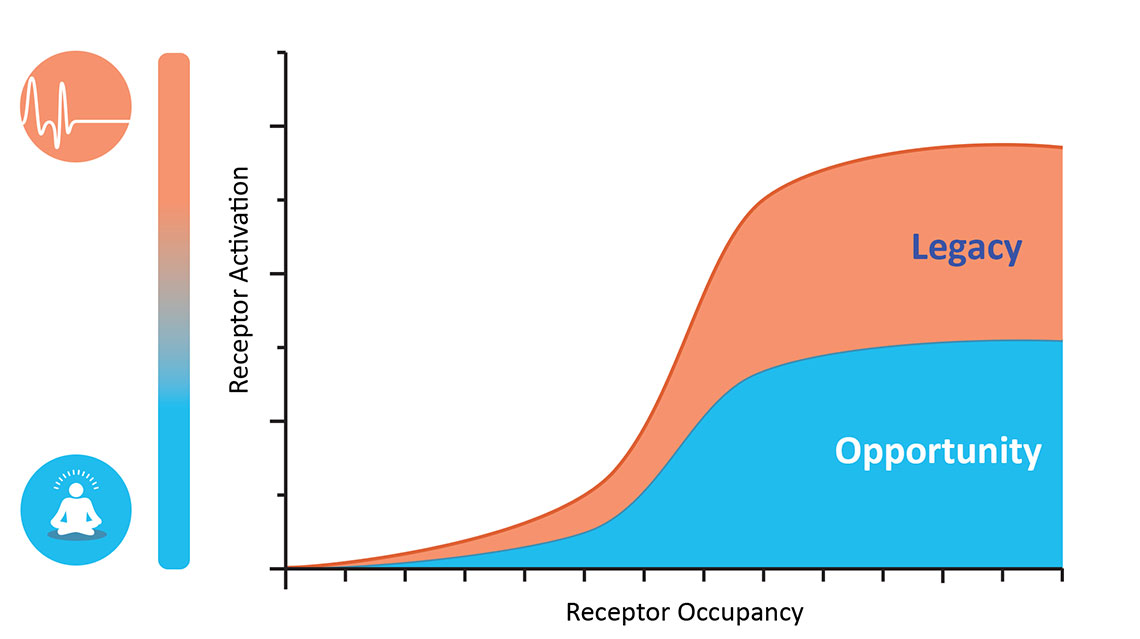Epiodyne Is Applying Proven Pharmacology to Brain Disorders

Legacy opioids such as morphine and fentanyl were discovered by serendipity decades ago, in search for more potent pain killers. They over-activate the endogenous opioid system, bringing risk of euphoria, abuse, addiction and overdose. Interestingly, several controlled clinical trials using low doses of legacy opioids demonstrated rapid improvements of symptoms in patients with treatment-resistant OCD1, treatment-resistant depression2 and those at risk of suicide3. These findings provide evidence that modulation of endorphin signaling is a valid approach to treating highly morbid neuropsychiatric conditions. At the same time, the well-known liabilities of old synthetic opioids make them unsuitable for use in brain disorders outside of “proof of concept” clinical studies.
Epiodyne scientists are engineering structurally novel drug candidates to modulate endorphin signaling and relieve some of the most debilitating symptoms of serious brain disorders. Our goal is to develop rationally designed medicines that produce a limited amount of receptor activation and are safe to use in patients with brain disorders. Our approach is based on cutting-edge research by our academic founders: Brian Shoichet and Aashish Manglik at UCSF; Bryan Roth at UNC Chapel Hill; Brian Kobilka and Greg Scherrer at Stanford; and Peter Gmeiner at FAU Erlangen-Nürnberg. Over the last two decades, their work led to the determination of high resolution structures of multiple opioid receptors4, and to the discovery of new drug leads that that can be optimized to target distinct receptor types with a desired level of activity.
Focus
Our goal is to restore function of the brain reward system to treat conditions such as compulsivity, self-injury and addiction.



